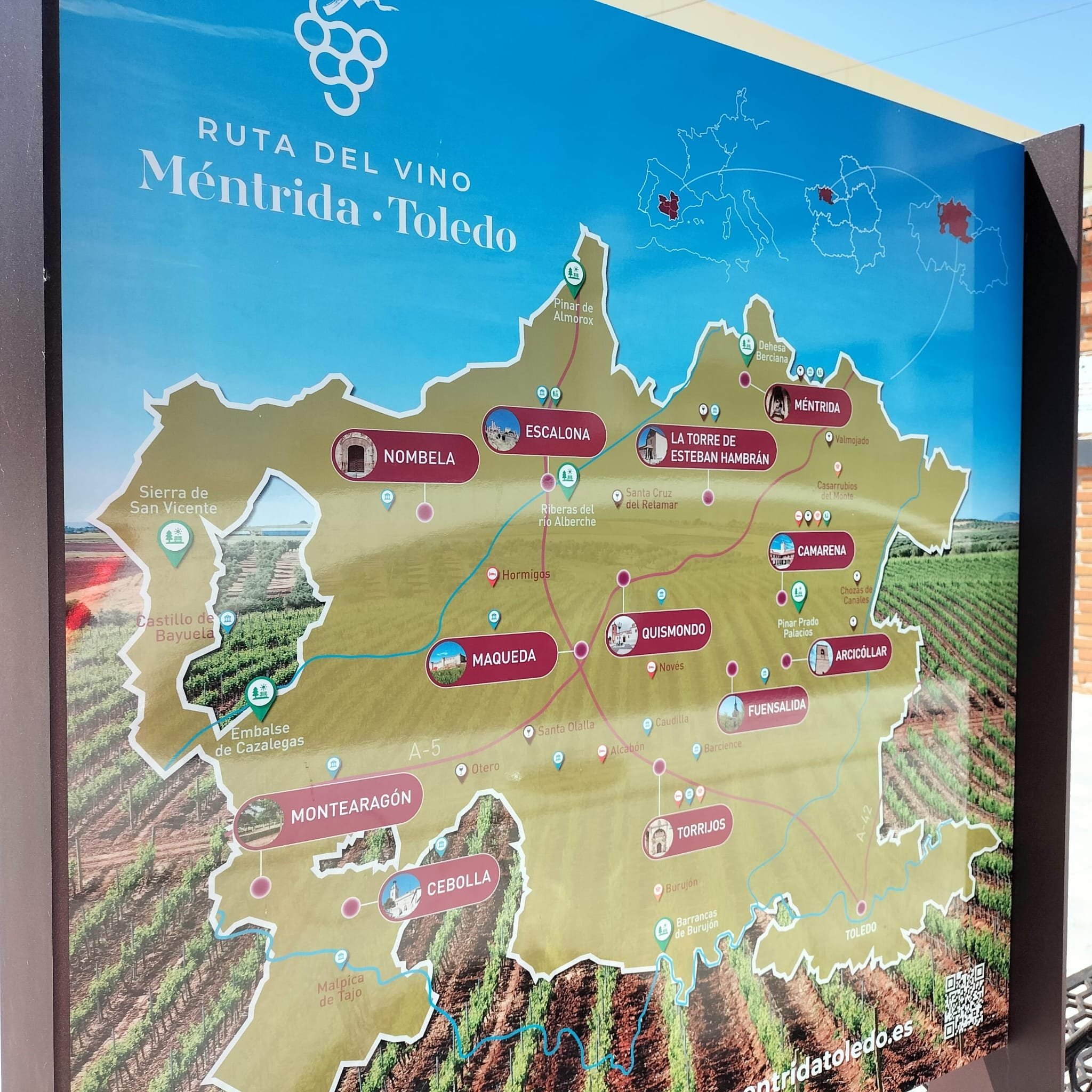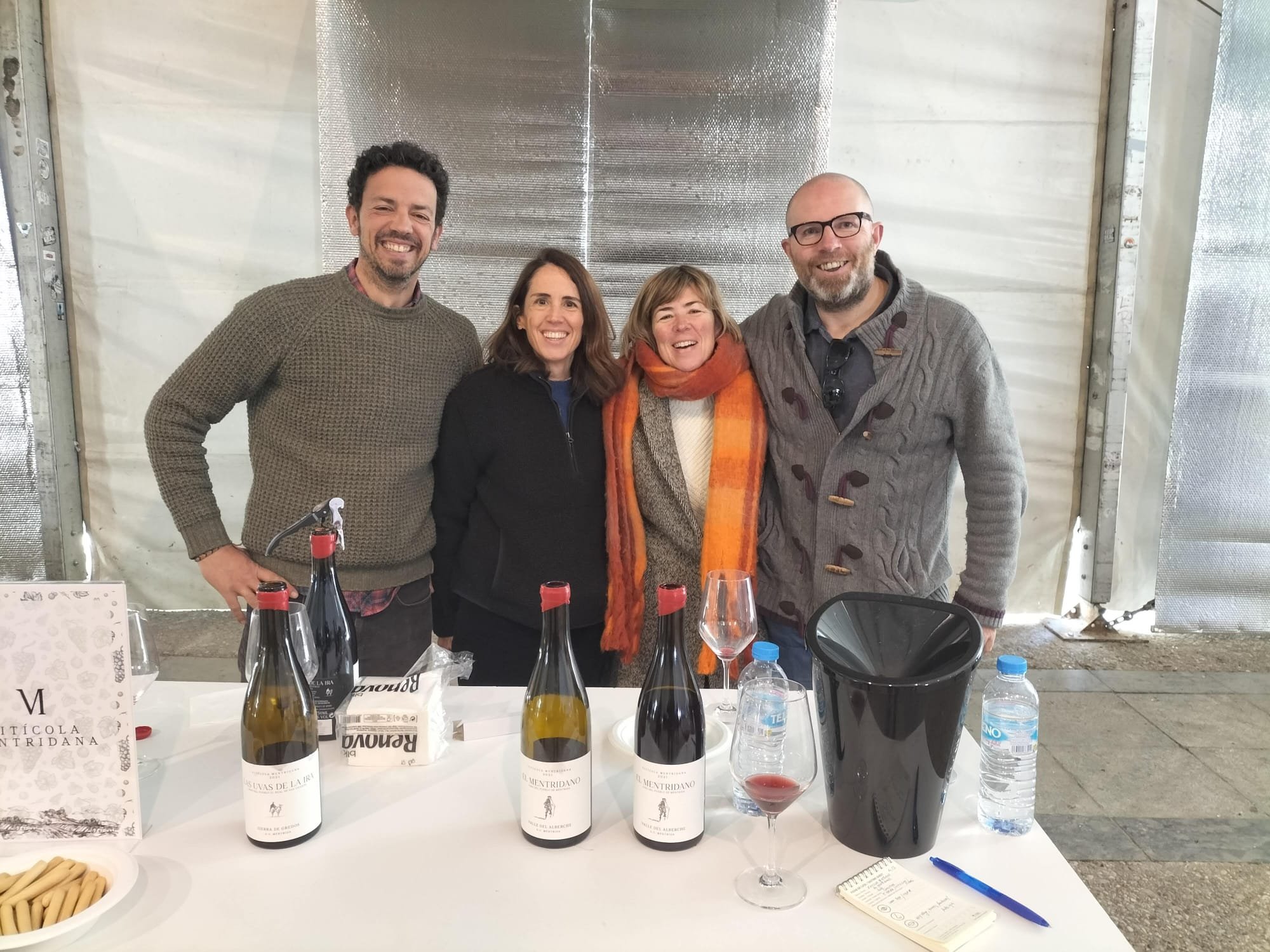¡Ponme un Méntrida!
The Méntrida Report
At little more than 40 minutes from my door the wine producing zone of Méntrida is within easy reach of Madrid and this article is based on the three visits I’ve made to the region this year. It’s a region that is keen to welcome the curious wine lover and the DO have done much in the last few years to showcase their wines by developing the “enoturismo” side of things. Wine fairs and bodega tastings are now a regular occurrence and as I’m a sucker for both they’ll be seeing more of me whether they like it or not!
A bit of history
So where is Méntrida exactly? The DO takes its name from a village set within the zone which itself sits in the north-west of Toledo province, bordered by both the provinces of Ávila and Madrid to its north. Wine production here has been recorded as far back as the 12th century but it wasn´t until 1976 that the DO was formed.
There are around 25 producers working under the auspices of the DO and there are roughly 6,000 hectares under vine. Not a big region by any means but Méntrida is far more about quality than quantity. That quality is built around their Garnacha which accounts for approximately 80% of production. That’s not to say you can’t find Méntrida whites. Verdejo, Garnacha Gris and Garnacha Blanca are all being bottled by various producers. More of that later.
Qué hay?
The DO may be small but uniform it isn’t. As it abuts the more mountainous terrain of Ávila and Madrid to the north the Garnacha vines here sit at around 800 metres giving a fresh, floral and mineral profile to the wines. This is the eastern tip of the Gredos range with its granite and quartz soils. Rainfall is sporadic, around 400mm per year, and a continental climate dominates. Hot summers, cold winters and the occasional dusting of snow to provide much needed irrigation. Making wine in this part of the world tests your mettle and many have abandoned the industry to focus on more profitable crops such as pistachio nuts but on the plus side you can still find pre-war bush vines if you know where to look and have a few euro to spend.
Some of my favourite Méntrida wines come from grapes grown in this area, predominantly around the village of La Real de San Vicente. Top of the list would have to be Las Uvas de La Ira. Previous vintages of this were in the hands of the mercurial Dani Landi but he’s gone off to focus on Comando G and other projects. The baton has been handed to Curro Barreño and his team at Vinicola Mentridana. Barreño will already be well-known to lovers of Atlantic-profile reds due to his work at Fedellos in Ribeira Sacra and Ca Di Mat in Madrid. Cousin José is carrying the winemaking torch over in the UK at Vagabond Wines whose urban winery in Battersea Power Station is now featuring on London wine lists. I caught up with them at a wine fair on a chilly morning in March and was very impressed with their first vintage of La Ira. The vibrancy, the crunchy red berries and the sotobosque are still impressively front and centre.
Further south the land becomes flatter and more arable. While this is the heartland of the Méntrida DO Garnacha still performs well here due to the calcium-poor soils. The plots here are dominated by bush vines some of which are as much as 80 years old. Here the Alberche river, one of the natural borders between Castilla-León and Castilla-La Mancha, and its numerous streams help to provide the vines with much needed refreshment during what can be brutally hot summers with temperatures reaching 40ºC and above in July and August.
The Producers
So which other Méntrida producers are worth seeking out at home or abroad? Perhaps the best known in the region is Bodegas Canopy. Alfonso Chacón’s project is certainly eclectic. He produces seven different Garnacha from the entry-level glugger Ganadero to the spectacular Kaos which comes from 80 year old vines just over the Ávila border. Also rating a mention is their Garnacha Blanca, Loco. Why Loco? Well according to Alfonso you’d have to be mad to cultivate the capricious Garnacha Blanca in conditions as extreme as these. The packaging includes a mini-straitjacket covering the bottle. Quirky would be one way to describe it! Canopy also make one of the finest expressions of Syrah to be found in central Spain. Malpaso manages to achieve what few Spanish Syrah seem capable of; freshness without sacrificing typicity.
Both Arrayán and relative newcomer A Pie de Tierra, whose bodega is located in Aldea de Fresno, Madrid, are producing excellent Garnacha while Arrayán also blend various French varieties. It would also be remiss to not mention the new kid on the block, the talented Albacete winemaker Pepe Rodríguez de Vera. He has found three very old plots of Garnacha near the village of Fuensalida from which he produces Atalaque, the wine I thought to be the revelation of the recent wine fair organized by the President of the DO, Juan Alonso Cuesta, in the neighbouring village of La Torre de Estaban Hámbran.
Juan the Man from La Mancha
Finally, more about President Juan. A third-generation winemaker himself (his two sons are the fourth) he is dragging the DO kicking and screaming into the 21st century. He can only look on with envy at the six-figure sums that the Cebreros council are lavishing on the neighbouring DO in more affluent Castilla-León. Méntrida doesn’t have that type of cash to throw around on marketing so a more grass-roots approach is necessary and the region’s proximity to Madrid a useful tool in spreading the word.
His bodega Alonso Cuesta, located in a wonderfully atmospheric old palacete in La Torre de Estaban Hambran, is producing better and better wines too. He and his sons have harnessed the personality of their individual plots and are now making “vino de parcela” rather than blending them.
Even without the wines to tempt you the village is worth a trip out from Madrid with its lovely Plaza de la Constitución, the baroque retablos of the church and the succulent venison on offer in Restaurante Yantar.
Maybe we’re still some way away from the day when the good folk of Madrid, or Toledo even, walk into a bar and exclaim “¡Ponme un Méntrida!” but things are certainly looking up for a region which is beginning to punch above its weight thanks to the vision and hard work of its President, the talent of its winemakers and, even considering this is La Mancha, its far from quixotic Garnacha.







